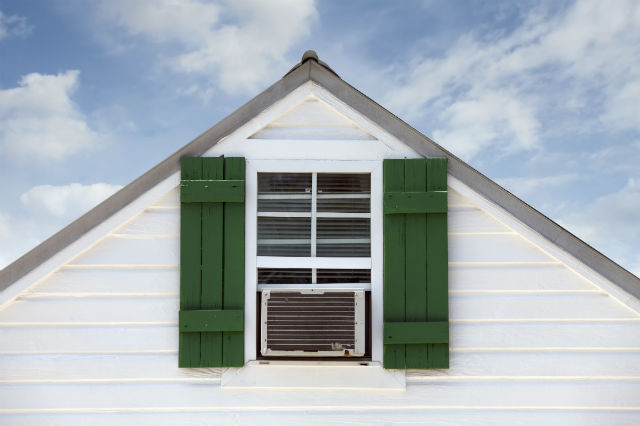The brunt of the winter weather has passed, which means it’s almost time to turn off the heat and embrace the cool. With the spring and summer months ahead, home cooling is on the forefront of many people’s minds, maybe even yours. You might even be thinking of upgrading. Before you do, ask yourself these questions and consider the options to determine if you are using the best air conditioning system for your home and budget.
These are some factors to consider when deciding:
- What kind of housing do you live in?
- How much can you afford to pay upfront for a home cooling unit?
- Do you want to cool the entire house or apartment or just a specific room or rooms?
- Is the noise level of the home cooling unit a big factor? (As long as the noise means it’s working, of course!)
- Do you want your air conditioner to blend in with the design of your home? Or does it matter?
- Are you willing to use windows to house your air conditioning?
Once you’ve answered these questions, you’re on your way to picking the best home cooling system for your home. Here are the four most common systems.
1. Window Air Conditioners
Designed to fit in double- and single-hung windows, these home cooling appliances are relatively small, portable and easy to install. Plus, if you have budget constraints, they are extremely budget-friendly, are about 30 percent efficient and have warranties that last up to five years.
Keep in mind that these appliances aren’t designed to cool an entire house, so you would need multiple to cool one home or even an apartment. Once you’ve determined which window to use, that particular window can no longer be used. High ceilings, lots of windows and doors and high sun exposure can also impact air conditioner efficiency. This system also comes with a compressor and can make quite a bit of noise.
2. Portable Air Conditioners
Portable air conditioners are home cooling appliances that stand on the floor rather than squarely sit in a window. They can be used to cool any area of the home, much like window air conditioners. With some models resembling mini-robots, they’re best used for apartments and homes with windows that can’t fit window air conditioners.
Generally, they are easier to set up than window units, and they don’t obstruct window views. They can even be rolled around on casters to be positioned any way you want. Whether you want them in the center of the room or in a corner, they’re mobile enough to be switched around as often as you want.
However, these air conditioning units usually only deliver half the cooling power they claim to have, even if they’re working non-stop. Additionally, they’re generally costlier, noisier and less efficient than similar units, which drives up purchasing and operating costs. You would also have to drain the water reservoirs manually, since the units remove excess humidity from the air.

3. Ductless Mini-Split Air Conditioners
Ductless mini-split air conditioners work with two parts: an outdoor compressor – much like a central air conditioner – and an indoor evaporator coil and air handling unit that mounts on the wall or ceiling. A conduit travels through a sealed hole in the wall and links these two units together.
This type of home cooling appliance is best for older homes that don’t have the necessary ductwork for central air-conditioning or for small homes. This is pretty much the closest you can get to having centralized air-conditioning without having to tear up the ceiling and walls to put in the ductwork.
Additionally, it can provide flexible cooling to individual parts of the house as well as heating during the winter, maintain small size while performing an energy efficient operation and work quietly as an ordinary fan, since the compressor is outside. You also don’t need to use any windows for installation, so there’s no need to sacrifice your window views for cool comfort in the sweltering heat.
This air conditioner is a bit more expensive than window or portable home cooling appliances, as they need to be professionally installed. The professional installation includes drilling a three-inch hole into the wall to link the indoor and outdoor components. Since this home cooling system isn’t designed to blend in to what it’s mounted to, you’ll also need to take into account interior designing for the mounted unit.
4. Central Air Conditioner
The most popular home cooling appliance, central air conditioners are the most comprehensive way to cool a home. The process involves the distribution of cooled air through ductwork with the return and supply registers in each room. All the components are outside except the air handler, which is usually shared with the furnace.
If you’re looking to cool the entire house and already have the ductwork and forced air heating system in place, this is the home cooling appliance you should look into. The installation is straightforward, and having a centralized air conditioner leads to lower energy bills as well as improves home value, better indoor comfort, cooler temperatures and lower humidity.
Plus, if you’re just replacing an existing air conditioning unit, the cost of that replacement is even cheaper than putting in a new ductless mini-split.
However, central air conditioning does require annual maintenance, unlike the other home cooling systems on this list. The upfront costs are also pretty high, especially if you need ductwork installed.
Still not sure which home cooling system is right for you? Be sure to contact an air conditioning professional and talk with them about the various home cooling systems. Petro has a team of experts ready to help with fast and professional installation, advice on cooling and heating systems, repairs, maintenance and more.
Did you know about all these types of home cooling systems? Which one have you found to be the most effective? Let us know in the comments below!
AAA members can save $200 on a new A/C system by mentioning the code “AAA”.















